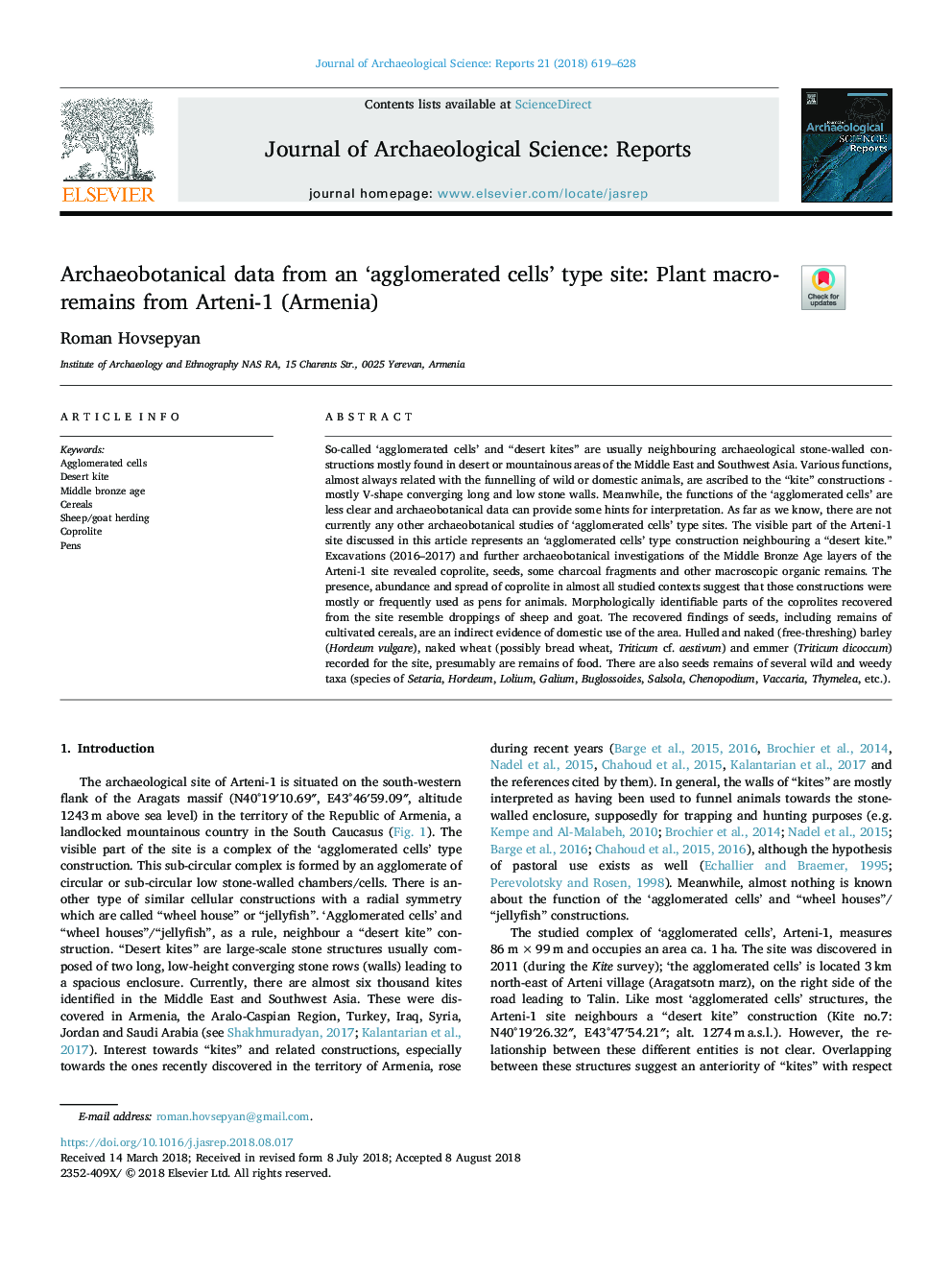| کد مقاله | کد نشریه | سال انتشار | مقاله انگلیسی | نسخه تمام متن |
|---|---|---|---|---|
| 11005172 | 1483922 | 2018 | 10 صفحه PDF | دانلود رایگان |
عنوان انگلیسی مقاله ISI
Archaeobotanical data from an 'agglomerated cells' type site: Plant macro-remains from Arteni-1 (Armenia)
دانلود مقاله + سفارش ترجمه
دانلود مقاله ISI انگلیسی
رایگان برای ایرانیان
موضوعات مرتبط
علوم انسانی و اجتماعی
علوم انسانی و هنر
تاریخ
پیش نمایش صفحه اول مقاله

چکیده انگلیسی
So-called 'agglomerated cells' and “desert kites” are usually neighbouring archaeological stone-walled constructions mostly found in desert or mountainous areas of the Middle East and Southwest Asia. Various functions, almost always related with the funnelling of wild or domestic animals, are ascribed to the “kite” constructions - mostly V-shape converging long and low stone walls. Meanwhile, the functions of the 'agglomerated cells' are less clear and archaeobotanical data can provide some hints for interpretation. As far as we know, there are not currently any other archaeobotanical studies of 'agglomerated cells' type sites. The visible part of the Arteni-1 site discussed in this article represents an 'agglomerated cells' type construction neighbouring a “desert kite.” Excavations (2016-2017) and further archaeobotanical investigations of the Middle Bronze Age layers of the Arteni-1 site revealed coprolite, seeds, some charcoal fragments and other macroscopic organic remains. The presence, abundance and spread of coprolite in almost all studied contexts suggest that those constructions were mostly or frequently used as pens for animals. Morphologically identifiable parts of the coprolites recovered from the site resemble droppings of sheep and goat. The recovered findings of seeds, including remains of cultivated cereals, are an indirect evidence of domestic use of the area. Hulled and naked (free-threshing) barley (Hordeum vulgare), naked wheat (possibly bread wheat, Triticum cf. aestivum) and emmer (Triticum dicoccum) recorded for the site, presumably are remains of food. There are also seeds remains of several wild and weedy taxa (species of Setaria, Hordeum, Lolium, Galium, Buglossoides, Salsola, Chenopodium, Vaccaria, Thymelea, etc.).
ناشر
Database: Elsevier - ScienceDirect (ساینس دایرکت)
Journal: Journal of Archaeological Science: Reports - Volume 21, October 2018, Pages 619-628
Journal: Journal of Archaeological Science: Reports - Volume 21, October 2018, Pages 619-628
نویسندگان
Roman Hovsepyan,